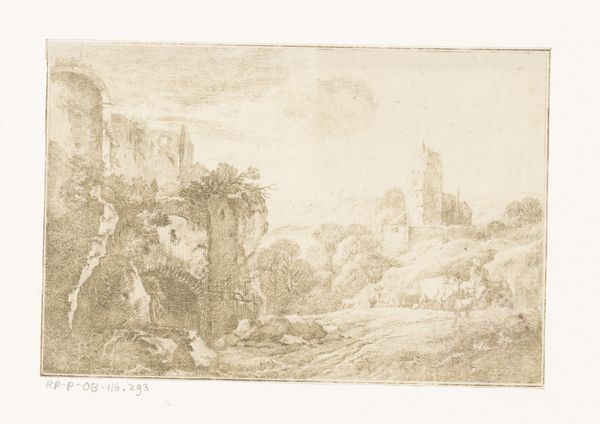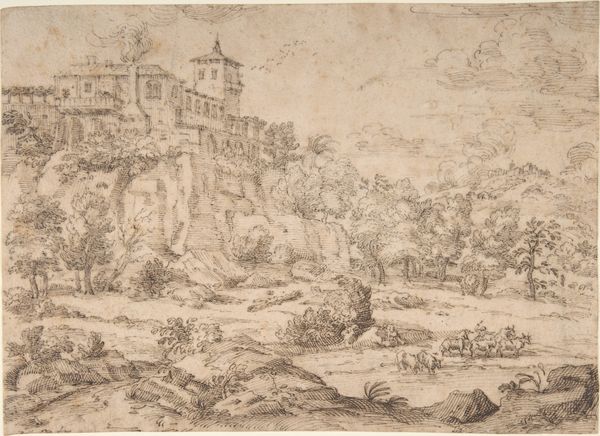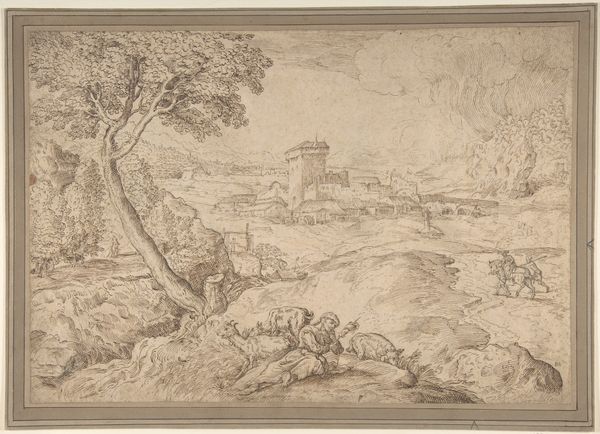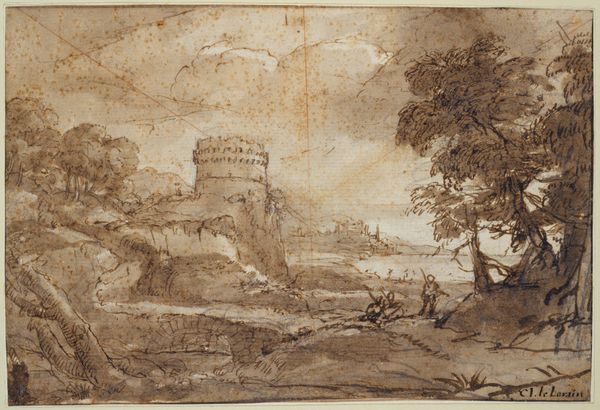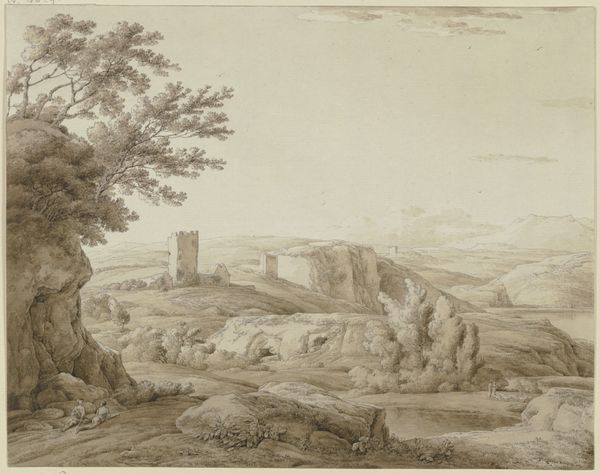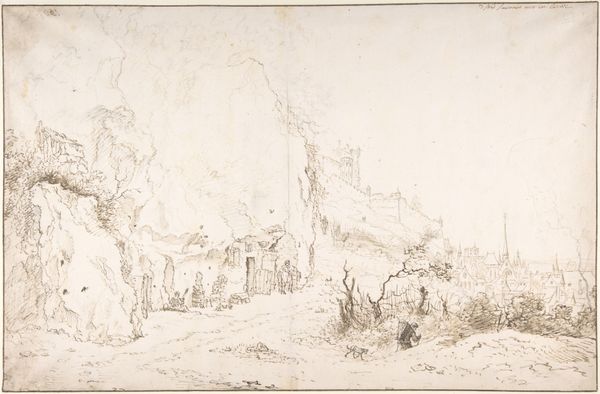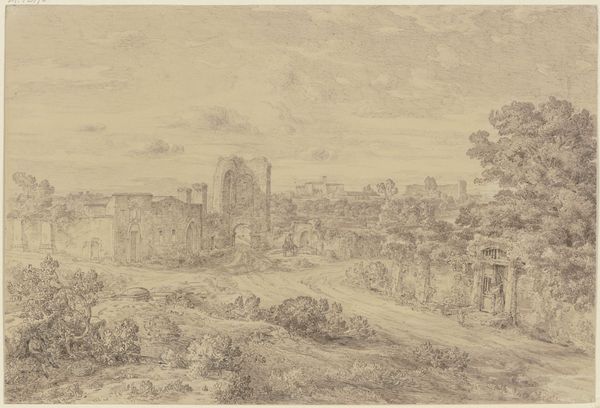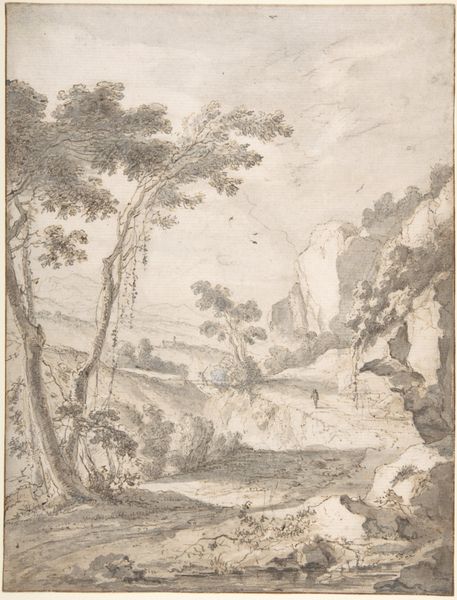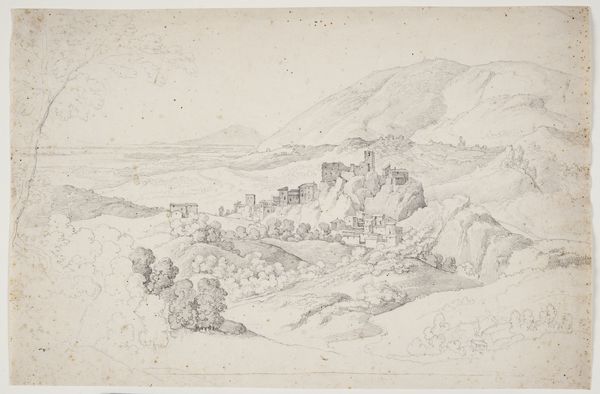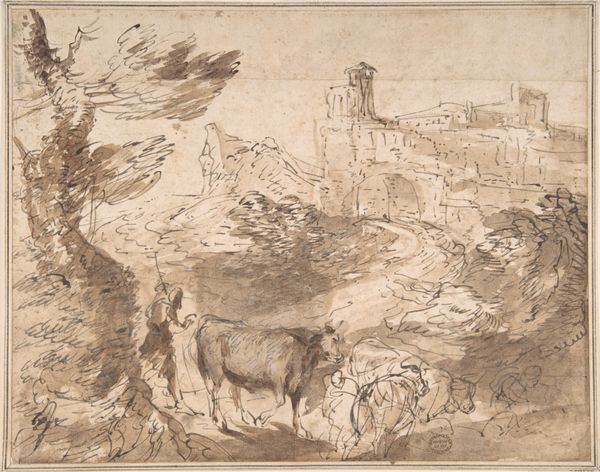
drawing, paper, ink, chalk
#
drawing
#
baroque
#
landscape
#
charcoal drawing
#
paper
#
ink
#
chalk
Copyright: Public Domain
Editor: This drawing by Adriaen van der Cabel, titled "Ruine einer Villa, vorne am Weg drei Leute und ein Hund"—which translates to “Ruins of a Villa, with three people and a dog on the path in front”—is done in ink, chalk, and charcoal on paper. It's an engaging Baroque landscape. What strikes me most is how the architecture is simultaneously grand and decaying. How do you interpret the ruin as the main subject matter? Curator: The crumbling villa becomes a stage, doesn’t it? Cabel uses this ruin to reflect on time, power, and the inherent instability of human endeavors. Baroque art often uses classical imagery, and these ruins are no different, prompting the viewer to contemplate the rise and fall of civilizations. Note how the seemingly pastoral figures in the foreground are dwarfed by the monument; their lives are fleeting compared to this enduring decay. It's not just about picturesque scenery; it subtly questions the narratives we build around power. Do you think Cabel’s choice to portray figures adds to this narrative? Editor: Absolutely, the figures really highlight the scale and age of the villa, while also adding an aspect of everyday life moving on amidst these old relics. This contrast really brings that message to life. Curator: Precisely. Consider also the act of drawing itself at this time. Depicting and documenting these structures was a way of claiming ownership over this history, an ownership afforded to wealthy patrons commissioning these artworks. It raises interesting questions about whose stories are told, and from what vantage point. How does that perspective impact your viewing? Editor: Thinking about it that way really shifts my perspective. It highlights that even landscape art has a viewpoint, and the choice of subject becomes a statement in itself. Thank you! Curator: And thank you, for allowing us to see Cabel’s drawing through such a contemporary lens.
Comments
No comments
Be the first to comment and join the conversation on the ultimate creative platform.

